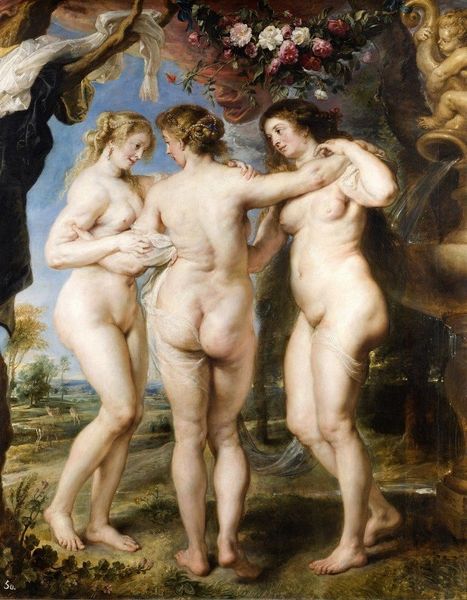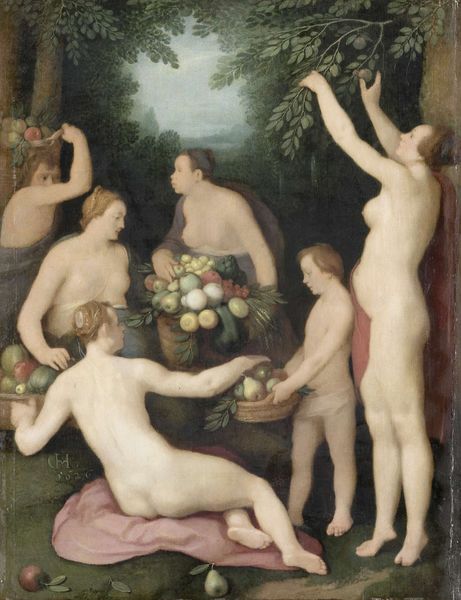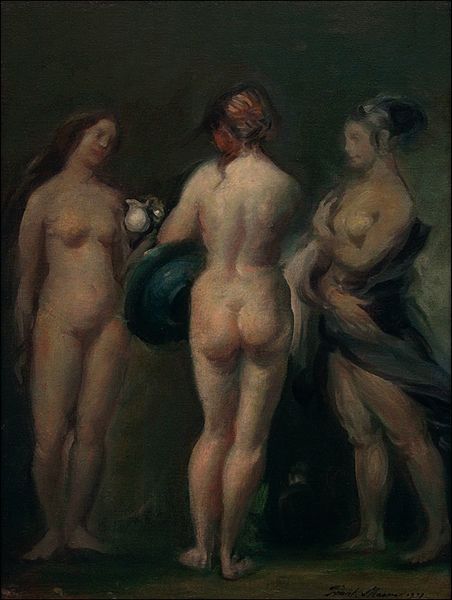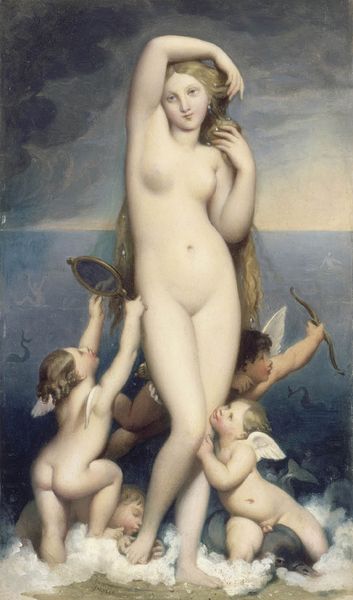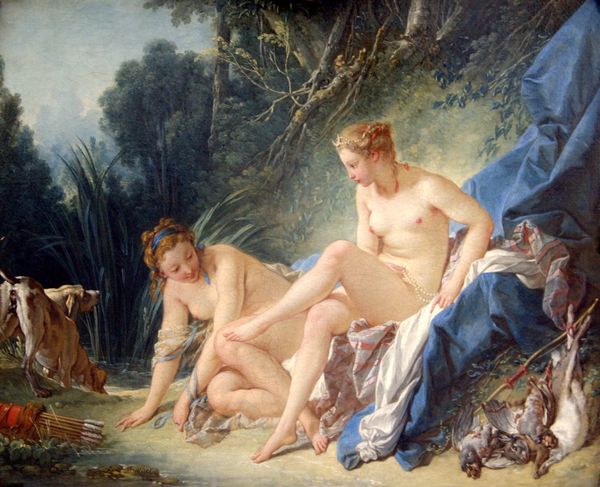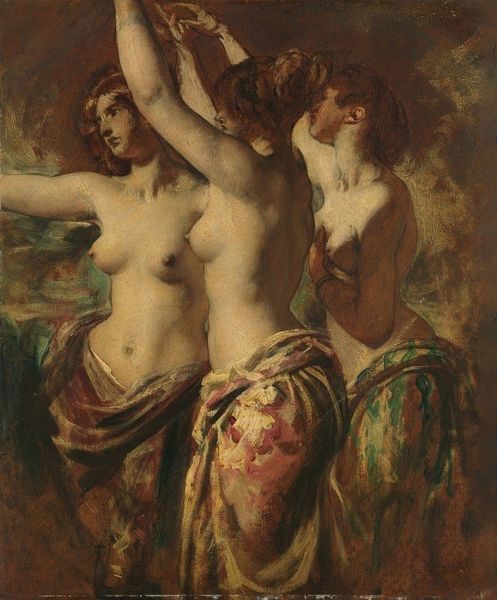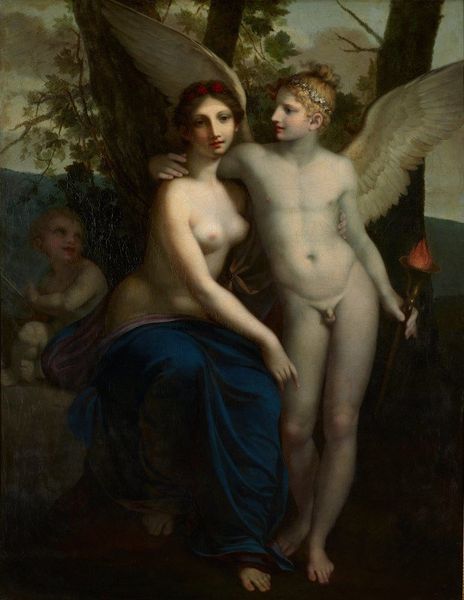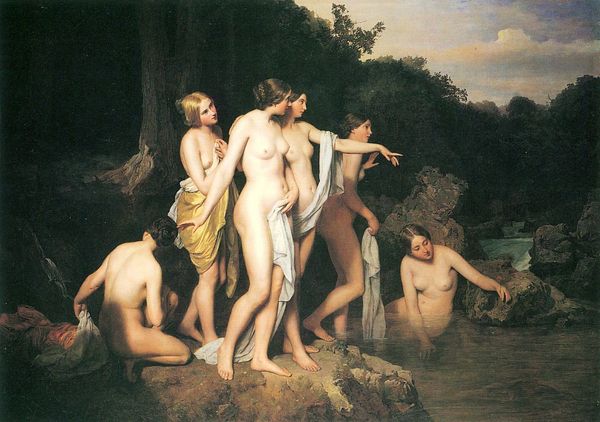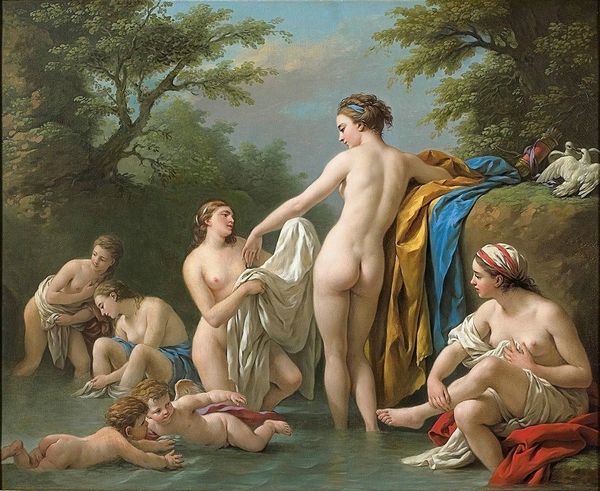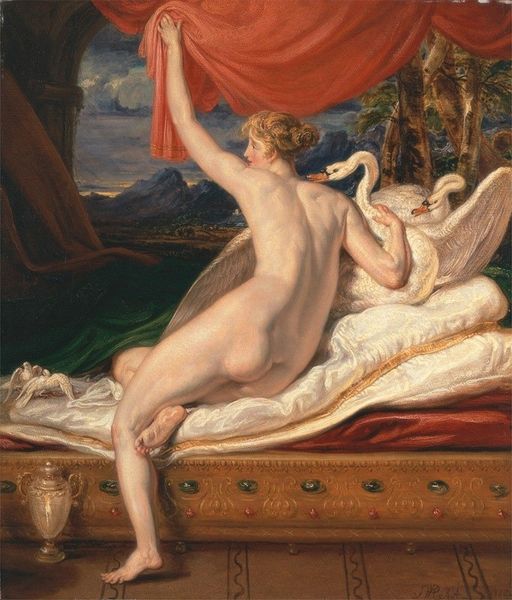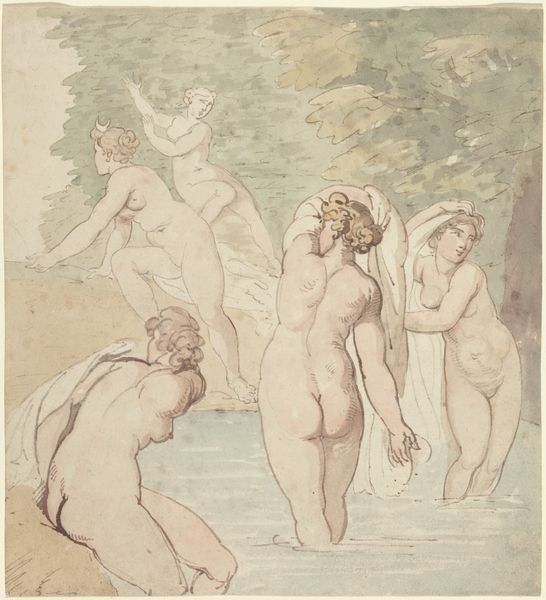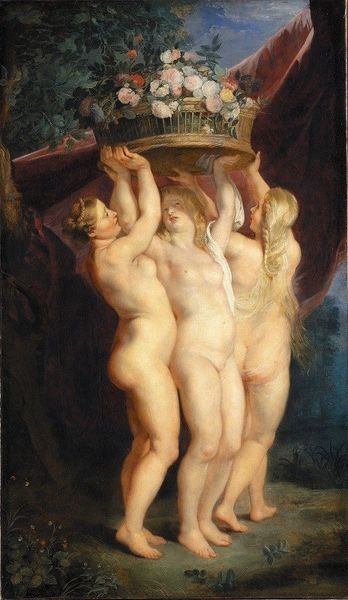
The Three Graces, after the Antique Marble Group in the Galleria Borghese, Rome 1737
0:00
0:00
jeanetienneliotard
Rijksmuseum
watercolor, pastel
#
allegory
#
figuration
#
oil painting
#
watercolor
#
genre-painting
#
pastel
#
academic-art
#
nude
#
miniature
#
rococo
Dimensions: height 59.4 cm, width 45.4 cm, weight 10 kg, height 73 cm, width 60 cm, thickness 5 cm
Copyright: Rijks Museum: Open Domain
Jean-Étienne Liotard rendered *The Three Graces* in pastel, capturing the essence of the antique marble group found in Rome’s Galleria Borghese. These figures, Aglaea, Euphrosyne, and Thalia, embody beauty, charm, and joy. The Graces, often depicted entwined in dance or embrace, symbolize the interconnectedness of these virtues. Their nudity underscores a natural, unblemished perfection. This motif of the three figures has roots stretching back to ancient Greece, echoed in countless Roman sculptures and Renaissance paintings. Consider Botticelli’s *Primavera,* where the Graces dance in a circle, bestowing gifts of nature. This recurring motif underscores the enduring human desire for harmony and beauty. Their intertwined forms echo the eternal dance of life, death, and rebirth—a subconscious longing for unity and completion. The image powerfully engages us on a deep, emotional level. Through the ages, the Graces have resurfaced, evolving in meaning, a testament to the cyclical nature of symbols and their power to reflect our deepest yearnings.
Comments
rijksmuseum about 2 years ago
⋮
Copying antique statues was a standard way for artists to learn their craft during the 18th century and beyond. Here Liotard takes the process a step further, bringing this famous white marble group to life by depicting the Graces in colour and placing them in a landscape.
Join the conversation
Join millions of artists and users on Artera today and experience the ultimate creative platform.
